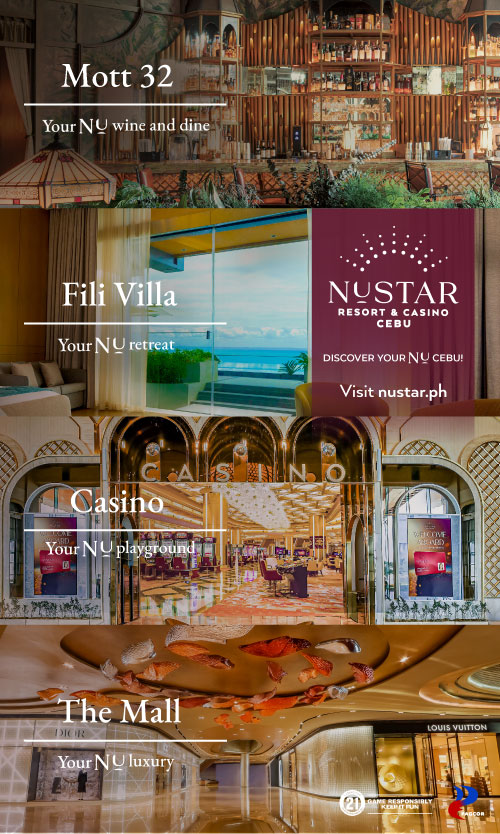The Homes of Zee
Cebu’s Traffic Gets Worse by the Day—Here’s How to Get Around It
With Cebu’s traffic situation at a seemingly all-time worst, various local government units and private companies have proposed solutions. From better mass transit systems to a third Mactan- Cebu bridge, here’s a rundown of the projects that could help us get to our destinations faster.
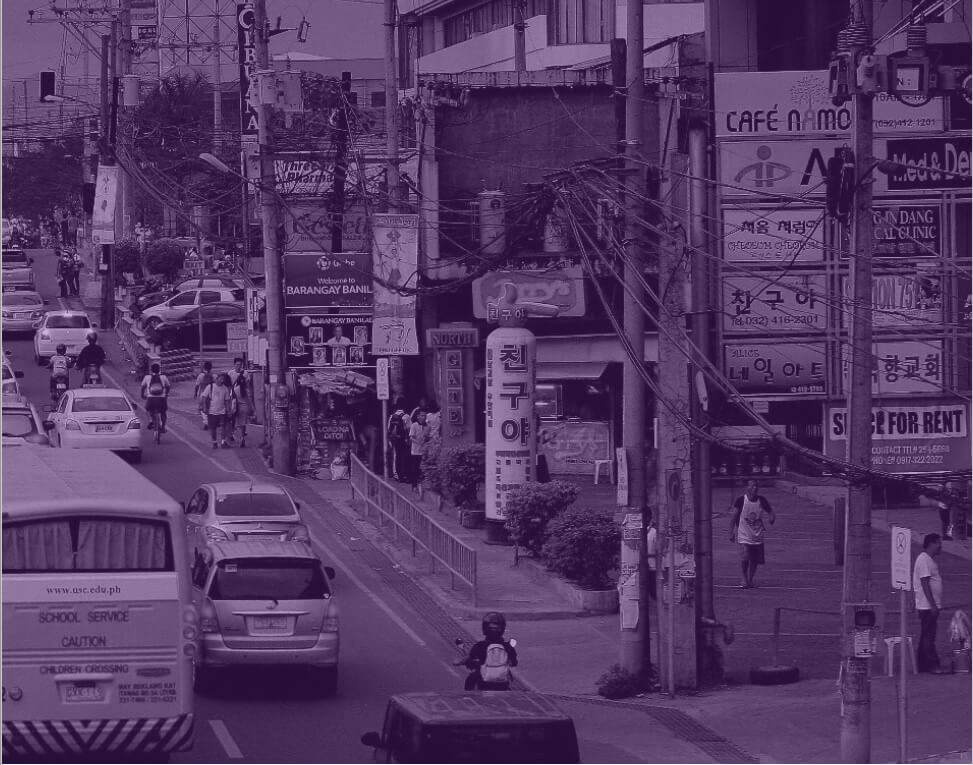
by Eldawn Catalan
This story is taken from our archives.
Originally published in Zee Digital Vol. 2 2018
Times have certainly changed. What used to be a 15-minute drive to a destination across the city has now become an hour of sitting in your car in the middle of clogged roads. Yes, you guessed it right—traffic.
Several factors contribute to the daily plague on our commutes such as the increasing number of vehicles on
limited roads, the mismanagement of road policies, and even the lack of discipline in local drivers. Whatever the case, the effect is exponential—being stuck in traffic in the beginning of the morning can greatly affect our productivity for the rest of the day.
The good news is that the government is taking steps to address this dilemma. Some of the proposed
solutions, however, are causing an uproar in the citizens, as there seems to be divided opinions on whether the proposals are feasible or not.
BUS RAIL TRANSIT
The year 2018 marks a decade of Mayor Tomas Osmeña’s pursuit to implement the Bus Rapid Transit system. The mayor has been proposing the idea since the 1990s, but formal planning only began in 2008.
When completed, the proposed BRT Project will cover 16 kilometers from Bulacao to Talamban and will have 176 buses passing 33 stations every two to five minutes. Around 33,000 passengers are expected to use the BRT line daily.
With a loan assistance from the World Bank, the Php16- billion project has had its share of criticism, resulting in
delays in its implementation. Critics have said that the BRT is not the solution to the traffic crisis because Cebuís roads are too narrow. Environmentalists were also angered when the mayor had announced in an earlier interview that 2,000 trees would be cut down along the BRT route. however, this was resolved with the promise to replant the trees.
Targeted for completion in 2021, city officials have yet to secure the area and the right of way for the project.
MONO RAIL TRANSIT
A monorail transit system has also been proposed to help decongest traffic in Cebu. The project’s main proponent is
Philtram Transportation Consortium Inc.
The initial proposal was for an 18-kilometer two-way alignment rail elevated from five to ten meters above the road, running from the South Road Properties all the way to Mandaue City. It will include building 14 stations with a
terminal hub located at the base of the Marcelo Fernan Bridge. The planned project, however, may even be expanded further north to Consolacion.
With six coaches that can each accommodate 125 passengers, the driverless trains are set to run at a maximum speed of 80 kilometers per hour. Philtram founder and COO Jose Guardo, Jr. assured that the train intervals will be at only 90 seconds even during the peak hours. The elevated monorail can transport 48,000 passengers in an hour per direction. The project, including the infrastructure, the trains and depot will cost approximately Php50 billion, an amount significantly cheaper and faster to build than the LRT.
Mayor Osmeña is supportive of the proposed project, as long as it does not interfere with his own BRT plans for the city.
LIGHT RAIL TRANSIT
With a consortium of both local and foreign companies working in partnership with the Department of Transportation, the construction of the proposed Light Rail Transit will begin in early 2019. Project developer Chris Kou confirmed that the processing of the documents started back in 2017.
Phase 1 of the planned LRT line will run from Carcar City to Danao City, and vice versa, and could benefit 2.8 million people. The project developer stated that the LRT will provide a fast, efficient and reliable transport system which will be built with no cost to the government and no government subsidy for its operation.
It will be Cebu City’s first rail transport to run in a subway system. In order to minimize the use of existing roads for the columns of the rail’s infrastructure, the LRT will go above ground beyond Cebu City. The public is also assured that it will be constructed with minimum disruption to existing vehicular traffic.
Michael Dino, Presidential Assistant for the Visayas, has favored the Light Rail Transit project over the BRT which would require the narrow roads to be widened before other steps are pursued. ìI am one with the Cebuanos in their quest to solve the traffic problem, which has worsened through the years because of neglect and incompetence by local leaders who don’t believe in planning,” he says. “I am also a daily commuter. I know how it feels to get stuck in traffic.”
WATER BUS
Cebuanos will soon be provided an alternative and traffic-free mode of transportation with the introduction of the Water Bus. Maxboat Marine Corporation, the builder of the waterbus, will run the service. The company operates from Cebu City and has its shipyard in Danao City.
There will initially be five vessels with a seating capacity of 70 passengers. With an average speed of 21 knots, the twinengined boats will sail from Cebu City going south to Naga, Oslob, Dalaguete and Santander with a
northbound route to include Liloan, Danao and Bogo.
“The vision is actually to provide better transport to these locations at about half the price, and half the travel time,” says Maxboat Chief Executive Officer Barbara Salmero.
The company has not announced a date for the operations of the Water Bus to start.
THE THIRD BRIDGE
Construction of the third bridge is finally underway to connect the Cebu mainland with Mactan Island. This urgently-needed link will offer an alternate route to lessen traffic in Metro Cebu as well as
along the two existing bridges.
The link óofficially the Cebu-Cordova Link Expressway (CCLEX)ó will start at the South Road Properties on the Cebu City side, crossing over Mactan Channel and will end in Cordova town. It can handle 40,000 vehicles daily while cutting travel time between Cebu City and Mactan in half.
The CCLEX will fully stretch for 8.25 kilometers, but the bridge itself is actually only 390 meters long and will rise 51 meters above sea level. The 4-laned cable-stayed bridge is designed with 2 lanes in each direction, with a 1.7 meter-wide lane for pedestrians and bicycles on both sides.
Target date for the project’s completion is the first quarter of 2021, in time for the grand celebration marking the 500th anniversary of Ferdinand Magellan’s arrival in Cebu. There is a proposal to name it as the Sto. Niño Bridge.
A project of the Metro Pacific Tollways Development Corp., the company is responsible for the bridge’s construction, financing and operations. A toll fee of P89 is initially pegged for private cars once the bridge is finished.
INTEGRATED INTERMODAL TRANSPORT SYSTEM
The Department of Transportation (DoTr) has announced that it will implement an integrated transport system in Metro Cebu. This system incorporates a point-to-point (P2P) bus system; a monorail in Lapu-Lapu City; the Bus Rapid Transit (BRT) in three-lane roads; and the Light Rail Transit (LRT) lines from Carcar to Danao, and from Mandaue to the Mactan-Cebu International Airport.
“There is no single solution to address transportation issues. It needs a basket of solutions, that is why we
are pursuing the implementation of the integrated intermodal transport system in Cebu in the next two years,”DoTr Secretary Arthur Tugade says.
The IITS is a multi-faceted plan developed after due consideration of Metro Cebu’s road profile and the fast-growing need of efficient mass transport systems. It has earned the support of Cebu’s business community and is well
received by the commuting public.
With the planned projects for better mass transportation, we hope to see these traffic solutions come to fruition soon. It will certainly help solve the daily dilemmas most of us face, and reverse the damage bad traffic is having on Cebu’s economic growth.
Of course, as citizens, we can also do our part by following road rules, practicing good driving etiquette,
and being responsible pedestrians.
For now, we would just have to wait. hopefully, as the saying goes, a little patience will go a long way.
The Homes of Zee
The Homes of Zee–Holiday Edition: Christmas House No. 12
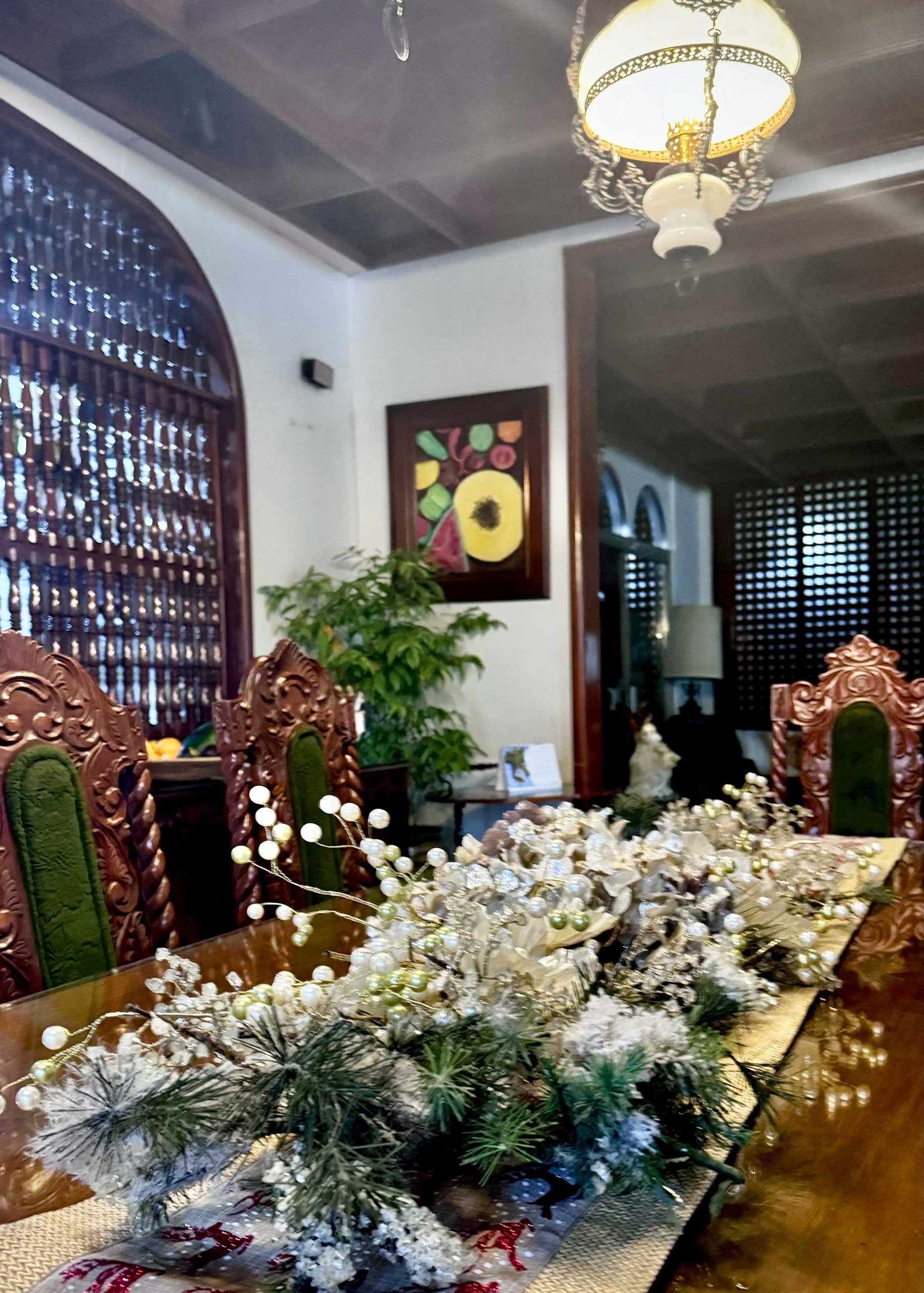
Christmas House No. 12 – Heart-felt Holidays at the Hofers’
Check out why this holiday home is on our list of 12 Cebu homes this season. Zee.ph offers a glimpse of Cebu’s holiday homes from far and wide. Please follow our series as we bring you a different home in the next few days!
Nestled in Banilad, Cebu City, the George Hofer residence stands as testament to enduring elegance. Constructed in the late sixties to early seventies, the mansion exudes timeless charm with warm brown molave wood panels and pristine white marble floors.


Stepping into this grand abode during the Christmas season unveils a journey into a beautifully storied past. This season, Molave wooden entance, intricately carved with the Hofer couple’s monogram, are adorned with opulent yuletide garlands. White velvet poinsettias and persimmon peonies alongside mother of pearl camellias are interspersed with pearlescent berries. Archangel Michael showers the guests with blessings from above, while a macassar ebony wooden effigy of Saint George (slaying the dragon) pays homage to the house owner’s namesake.


Adjacent to a private elevator, a grandiose Christmas tree stands tall, welcoming guests into a sprawling waiting hall. Here, an angel in teal and gold lamé cloth grouped together with exotic blooms gracefully plays the lyre; seemingly entertaining those who await entry.


Further down the hall is an ecru grand piano, where the lady of the house, a skilled pianist, performs Monti’s Czardas, Schubert’s Ständchen, and other rhapsodies on special occasions. A commissioned portrait of George and Dulce hangs on a wall above a console table that separates the hall from the formal dining area.


The Hofer home exudes old-world elegance that is seldom found today, yet its true charm lies in the joyous laughter and warm greetings of the Hofers, who gather annually to share Christmas cheer and delightful yuletide stories in this vibrant space.
The Homes of Zee
The Homes of Zee–Holiday Edition: Christmas House No. 11
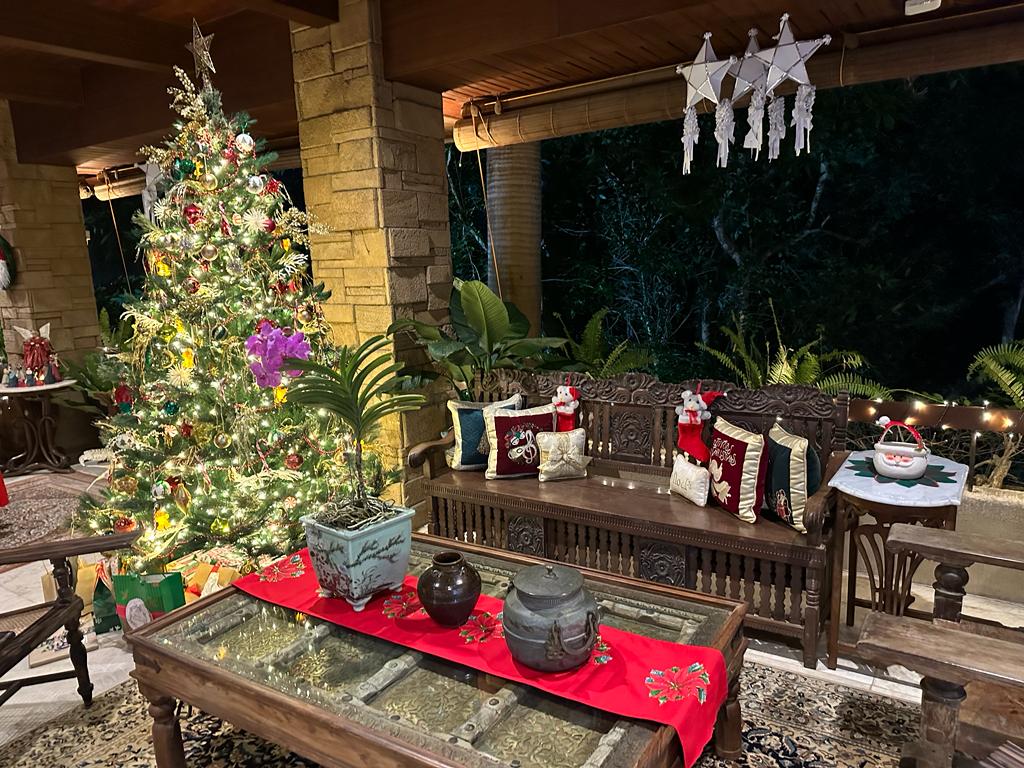
Christmas House No. 11 – Christine Pelaez
Check out why this holiday home is on our list of 12 Cebu homes this season. Zee.ph offers a glimpse of Cebu’s holiday homes from far and wide. Please follow our series as we bring you a different home in the next few days!
Designed by the noted Cebu architect Teng Jacinto, this expansive residence stands as a testament to the artful curation of Jun Pelaez. Over the years, he has meticulously assembled a collection of artworks, transforming the home into a gallery that reflects his discerning taste and appreciation for the aesthetic.
As the holiday season graces the air, the residence undergoes a festive tone under the artful touch of Jun’s wife, Christine. Embracing tradition, she bathes the home in the classic Christmas palette of reds and greens, infusing each corner with warmth and seasonal charm. The interior becomes a canvas for the holiday spirit, adorned with wreaths, ornaments, and the timeless glow of twinkling lights.
However, the true heart of this home lies in its welcoming spirit. There are two dining rooms, with chairs adorned with red bows and festive centerpieces, where family and friends converge for an equally sumptuous meal.
The Homes of Zee
The Homes of Zee–Holiday Edition: Christmas House No. 10

Christmas House No. 10 – The Hudsons’ Christmas Chronicles
Check out why this holiday home is on our list of 12 Cebu homes this season. Zee.ph offers a glimpse of Cebu’s holiday homes from far and wide. Please follow our series as we bring you a different home in the next few days!
The Hudson’s household buzzes with enthusiasm each time the holiday season unfolds. The heart of their Tokyo home, the Hudson Christmas tree, stands tall and proud, adorned with tinsel and cherished trimmings that span the years of their family’s growth. Each ornament tells a story, marking the arrival of a new family member with the annual addition of baubles bearing their names: Mary, George, Victoria and Charles.

Charles, the youngest Hudson at twelve, beams with joy as he proudly places the Christmas star atop the tree. No longer reliant on his father’s shoulders, Charles revels in his newfound height and the welcomed responsibility that comes with it.
In addition to the twinkling blue lights, the festive icons and the white-and-silvery ornaments, another cherished tradition had been completed at the beginning of the joyful season. The Hudson’s much-anticipated Christmas cards, an exciting accountof the family’s adventures, had been creatively crafted by Rose and Karl. The lively narrative chronicles the milestones and quests of each family member, with Karl’s animated storytelling and Rose’s artistic touch bringing the tales to life.

Rose shares, “by mid-November we print two hundred post cards of the Hudson family chronicles. The entire family, from the oldest to the youngest, gathers around to sign each card. Envelopes are lovingly addressed, and the kids lend a hand in labeling.”
In a heartwarming shift of roles, the Hudson parents, Karl and Rose, prepare to pass the baton. The careful planning and distribution of the Christmas cards are soon to become the responsibility of the eager younger generation.
With laughter, love, and a touch of adventure, the Hudson family embraces the season, creating and sharing memories that they and their friends treasure for life.
-

 Arts & Culture3 months ago
Arts & Culture3 months agoAsia’s Fashion Czar I Knew as Tito Pitoy; Remembrance of a Friendship Beyond Fashion with Designer Jose R. Moreno
-
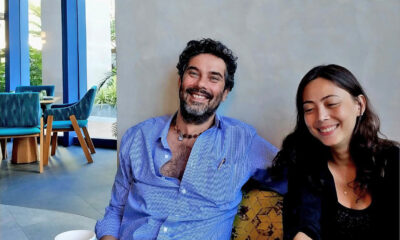
 QuickFx2 months ago
QuickFx2 months agoModern Indian Cuisine; Gagan Sethi and Gwen Trott Spice Things Up at Goa Nights in Cebu
-

 Style1 month ago
Style1 month agoThe Invisible Part of Fashion: Five of the Most Enduring Fragrances of All Times
-

 Arts & Culture3 weeks ago
Arts & Culture3 weeks agoKultura. Kapital. Kasalukuyan: Art that Speaks of Today
-
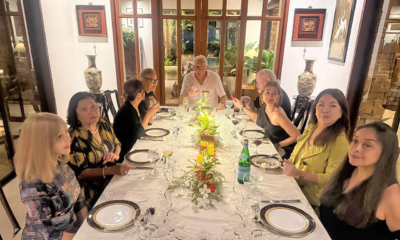
 The Scene1 week ago
The Scene1 week agoAnother Elegant Dinner at Chez Marguerite
-

 Prime Target2 weeks ago
Prime Target2 weeks agoLuna Vdl–Endless Summers in Siargao
-

 The Scene3 weeks ago
The Scene3 weeks agoA Stylish Soirée: Cebu’s Elite Celebrate Jackie Deen Lotzoff at Mad Thai
-

 QuickFx4 days ago
QuickFx4 days agoI Lost It at the Movies: Five of the Most Significant Films of the 1960s


